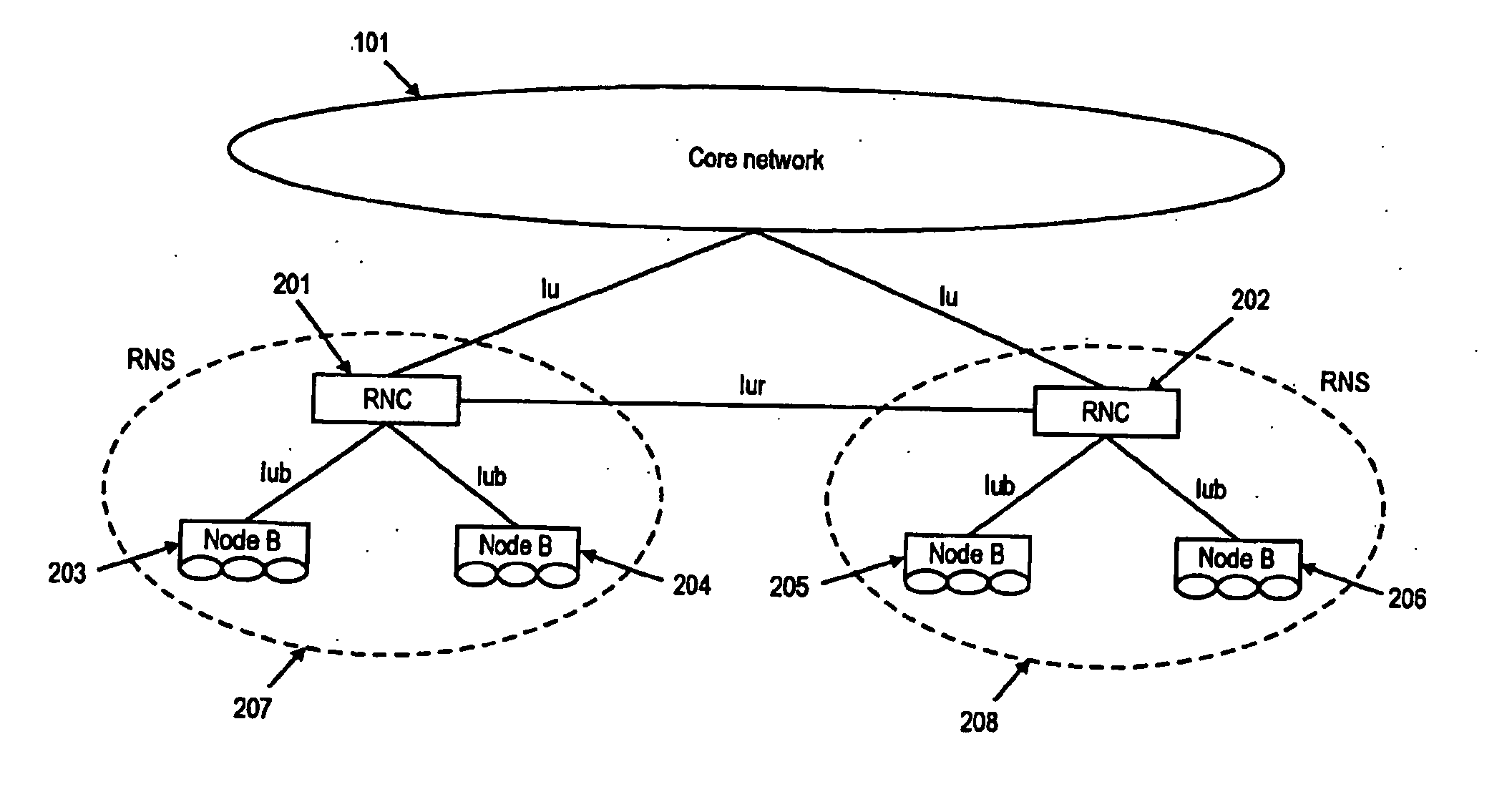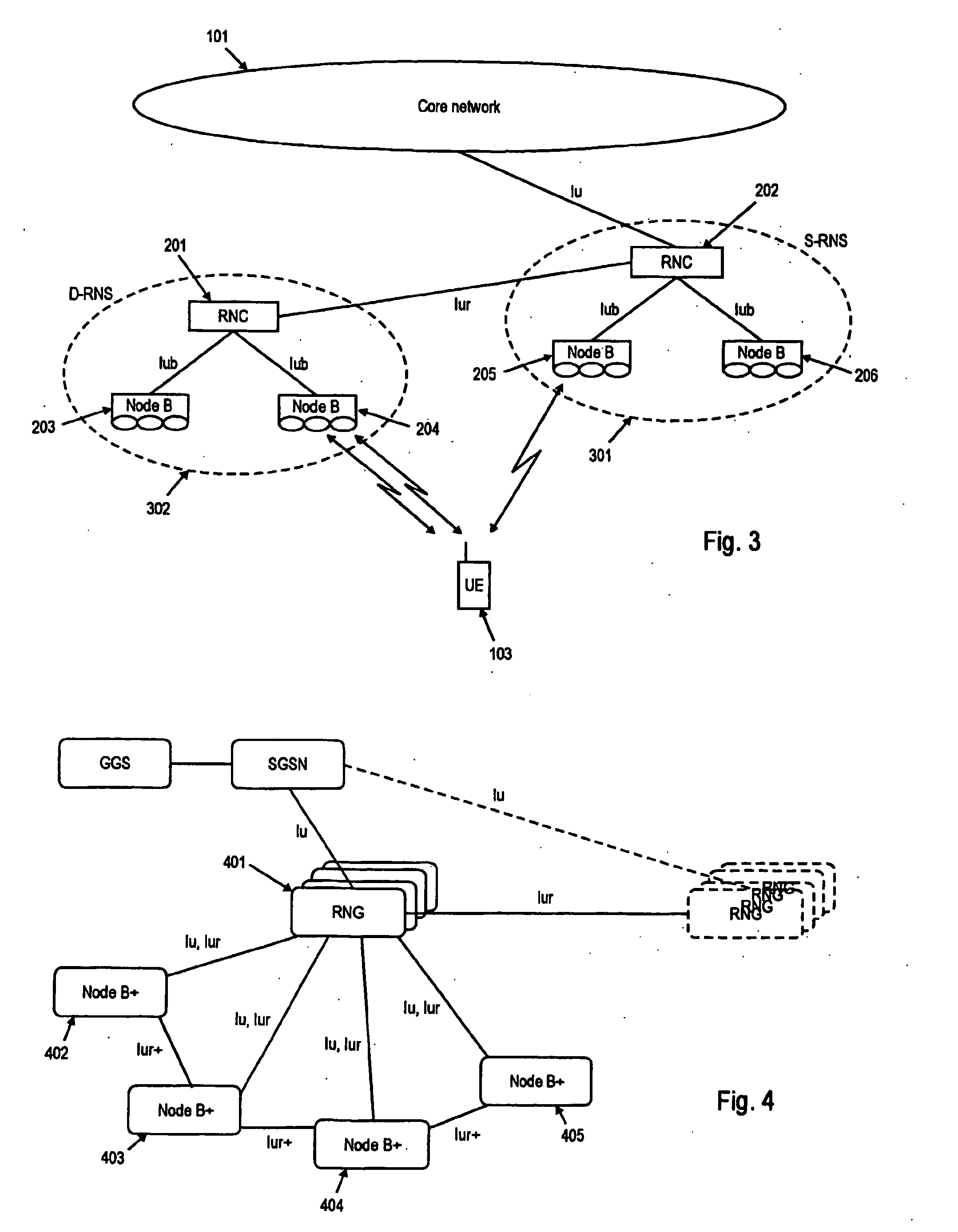Base station synchronization during soft handover
a base station and soft handover technology, applied in data switching networks, multiplex communication, site diversity, etc., can solve the problems of pilot signal strength hysteresis, inaccurate selection of serving nodes, and require extremely tight timing, so as to reduce the effect of signaling over the air interface during a soft handover
- Summary
- Abstract
- Description
- Claims
- Application Information
AI Technical Summary
Benefits of technology
Problems solved by technology
Method used
Image
Examples
Embodiment Construction
[0122] The synchronization of the soft buffer of the active set's Node Bs during uplink HARQ operation in soft handover will be described in detail in relation to different underlying UMTS architectures. Nevertheless the present invention is not limited to UMTS communication system. Rather, the principles underlying the present invention may be applied to other communication systems as well.
[0123] According to an embodiment of the present invention, the MAC-eu functional entities reside in the S-RNC and Node B. The MAC-eu is terminated in the S-RNC. Consequently, the reordering buffer of is located in the RNC as depicted in FIG. 8 while the different HARQ entities reside at the base stations of the active set as depicted in FIG. 7.
[0124] It is also mentioned that it is generally possible to terminate the MAC-eu in the Node Bs of the active set, i.e. each Node B would have to be equipped with a packet reordering buffer to reassemble data packets received out of order. However, in t...
PUM
 Login to View More
Login to View More Abstract
Description
Claims
Application Information
 Login to View More
Login to View More - R&D
- Intellectual Property
- Life Sciences
- Materials
- Tech Scout
- Unparalleled Data Quality
- Higher Quality Content
- 60% Fewer Hallucinations
Browse by: Latest US Patents, China's latest patents, Technical Efficacy Thesaurus, Application Domain, Technology Topic, Popular Technical Reports.
© 2025 PatSnap. All rights reserved.Legal|Privacy policy|Modern Slavery Act Transparency Statement|Sitemap|About US| Contact US: help@patsnap.com



